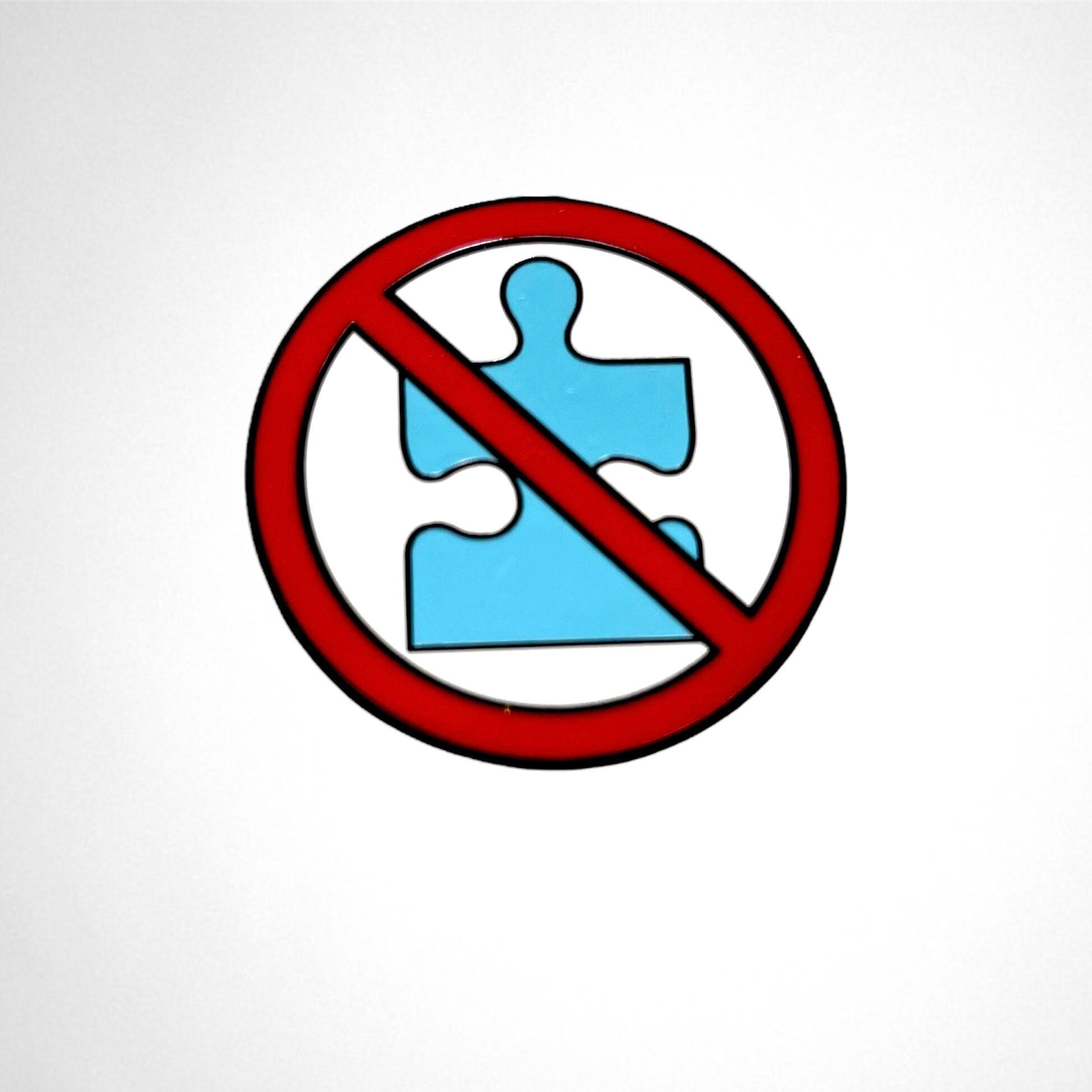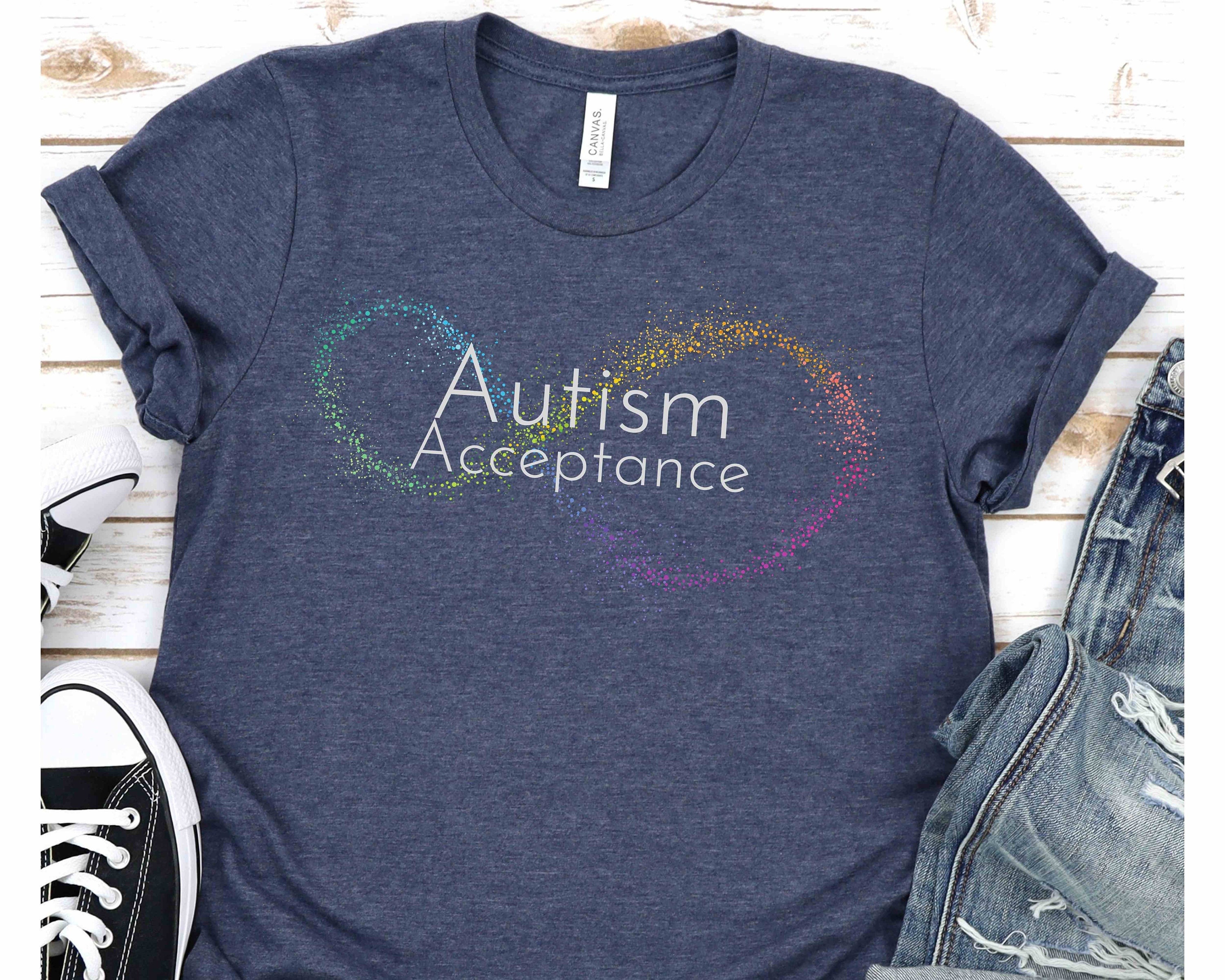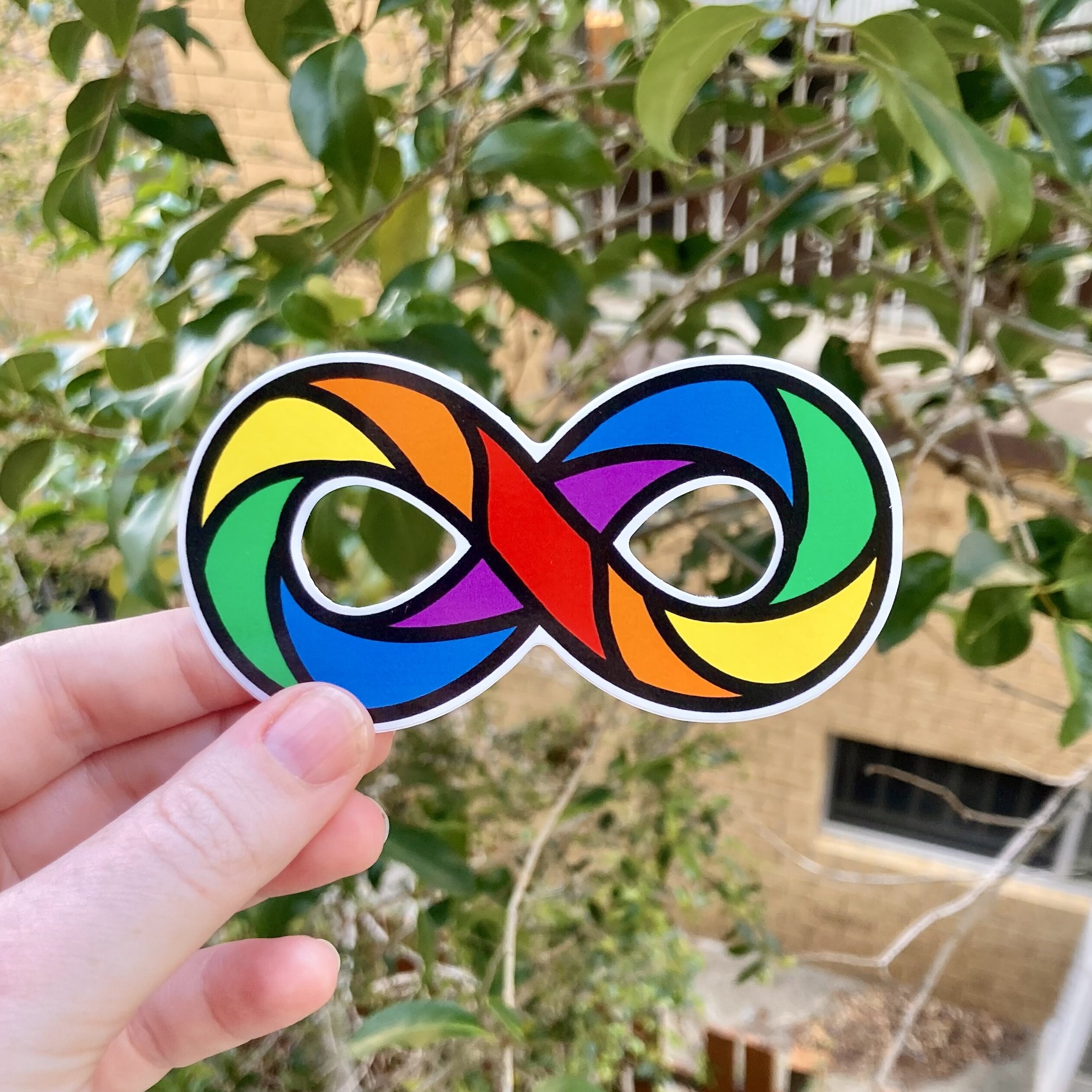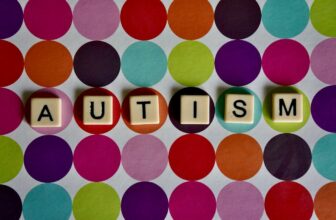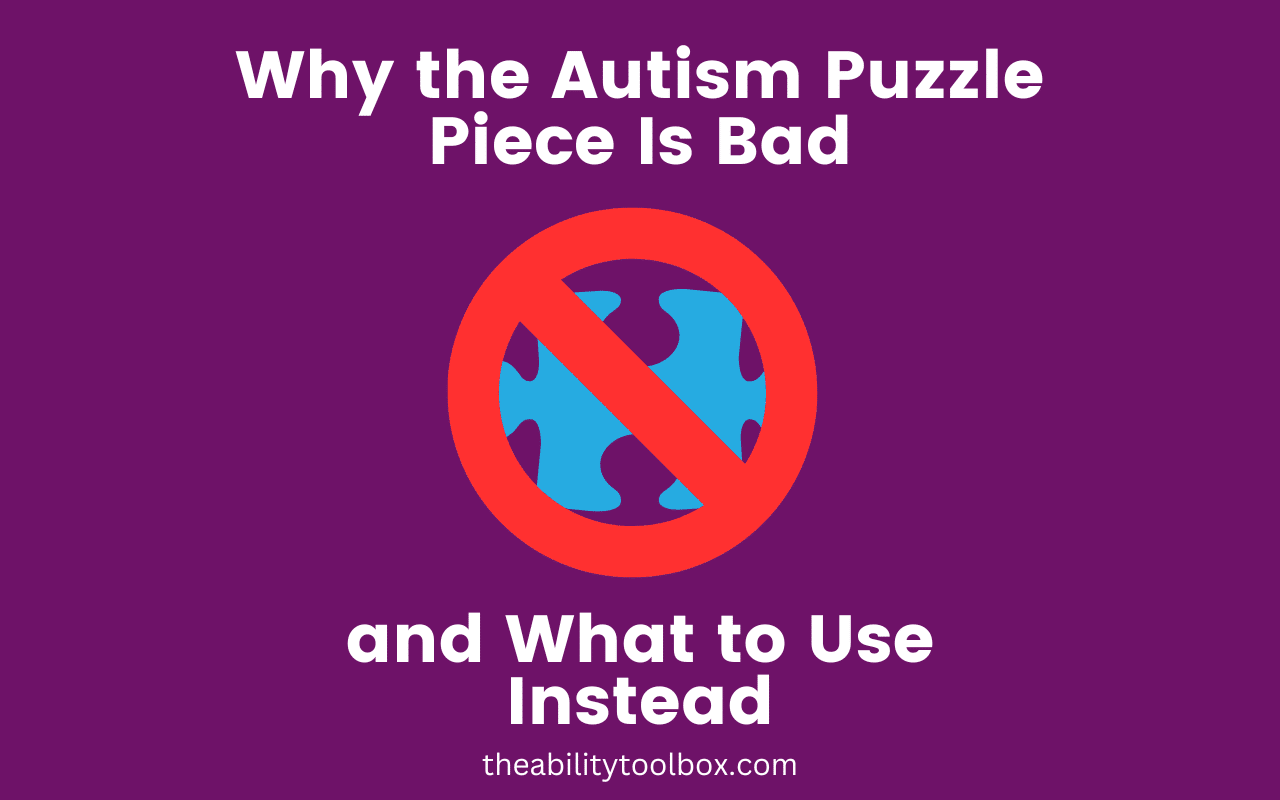
For many years, the autism puzzle piece has been one of the most widely used symbols to represent those on the spectrum. Despite its widespread use, however, many people in the autism community, especially autistic adults, have come out against this symbol. As an autistic adult, I have witnessed many debates, mostly online, about the puzzle piece. It’s a complicated issue, but an important one to discuss. Read on to learn why the autism puzzle piece is bad, and to find out about the infinity symbol autistic people prefer and how you can use it instead.
Why the Autism Puzzle Piece Is a Bad Symbol
The autism puzzle piece symbol suggests that autistic people are “puzzles” – incomplete or broken individuals who need to be “fixed” or “put back together” in order to be accepted by society. While it’s true that everyone needs support from time to time, this metaphor stigmatizes autistic people and can lead to feelings of isolation or exclusion.
The puzzle piece also implies that autistic individuals are not capable of making our own decisions without outside guidance or assistance to “solve” our “problems.” This ignores the unique gifts and abilities of those on the spectrum, which makes it particularly offensive for many autistic people and their supporters alike.
Representing autism as a puzzle also frames it from a neurotypical point of view rather than an autistic point of view. To neurotypical people, autistic people are puzzles to solve. Our behavior is complicated and confusing to them. Well guess what, it works both ways! I often find neurotypical people puzzling. They don’t say what they mean and they expect people to understand complicated unwritten rules without ever being taught. So if it were up to me, I would make the puzzle piece a symbol of neurotypical people, because it is like assembling a puzzle to figure out what they mean half the time!
The History of the Autism Puzzle Piece
The autism puzzle piece has an ableist and stigmatizing history. Warning, it's even worse than you think!
The first puzzle piece logo was designed for Britain's National Autistic Society in 1963 by Gerald Gasson, the parent of an autistic child. Here's the original version:
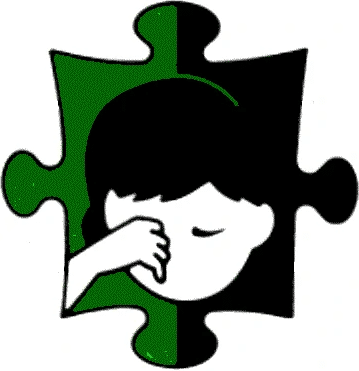
And here's how Helen Green Allison, one of the organization's founders, described the reasons for the design in 1997:
“The puzzle piece is so effective because it tells us something about autism: our children are handicapped by a puzzling condition; this isolates them from normal human contact and therefore they do not ‘fit in'. The suggestion of a weeping child is a reminder that autistic people do indeed suffer from their handicap.”
I don't know about you, but that went beyond throwing up a little in my mouth. I need a whole trash can.
Thankfully, the National Autistic Society has evolved since then to promote autism acceptance and uses a gradient letter “a” as their logo with no puzzle pieces in sight. But sadly, the same cannot be said for some notable autism organizations in the United States, who continue to depict autism as tragic and exploit autistic people.
The Connection Between the Puzzle Piece and Autism Speaks
You can't separate the puzzle piece symbol from the most prominent and problematic organization that uses it — Autism Speaks. Autism Speaks is one of the most well-known organizations in the autism space, and is responsible for “Light It Up Blue” and other highly-publicized awareness events. However, many within the autism community have come out against the organization due to their focus on “curing” or eliminating autism and their long history of ableist and offensive depictions of autistic children and adults. In fact, many autistic people consider them to be a hate group.
At its core, Autism Speaks is focused on finding a “cure” for autism, a goal that was part of their mission statement for many years. They removed it after considerable public pressure, but they continue to fund and promote research that could be used to cure or eliminate autism, such as the SPARK for Autism program that analyzes the DNA of autistic people and their family members.
Most autistic people do not want to be cured — we want to be understood and included in society. And we want autism charities to raise funds for things we actually need, such as support services, training employers on how to empower workers on the spectrum, better educational opportunities, etc.
We also want to be the ones running organizations that represent us. Autism Speaks claims to be “family-centered” and “led by those affected by autism” but most members of their board are neurotypical, and notable autistic advocates who have tried joining their board ultimately resigned in frustration.
It's clear that Autism Speaks still has a long way to go when it comes to representing and honoring those living on the spectrum. Unless and until they truly change, many in the autism community will remain wary about voicing their support for the organization — and the puzzle piece that has become inextricably linked with their image.
Why Some Autistic People Like the Puzzle Piece (or Don't Care) and How to Respond
Some people believe that the jigsaw puzzle represents the complexity and diversity of autism. They say that puzzles are fun and learning to put them together is worthwhile. They say that like puzzle pieces, we each have our own unique way of fitting into the bigger picture of humanity. I can understand wanting to reclaim the puzzle piece since it's so ubiquitous. But given its history and continued usage by harmful organizations, I'm not sure that doing so is possible or worthwhile.
Some autistic people and allies feel that we as a community have more important issues to deal with than the puzzle piece. I agree to an extent. When we're still fighting for basic rights such as housing, employment, and societal acceptance, it does sometimes feel trivial to argue about a symbol. But I realized that at its core, getting rid of the puzzle piece is about more than that. It’s about self-determination and self-advocacy.
Who gets to decide how a group of people identifies and represents themselves? It should be the people with that identity. The community had and still has a problem with parents and neurotypical people trying to speak for autistic people. They chose the puzzle piece, not us, and it came to be associated with some bad organizations and bad people. So rejecting that symbol and choosing a different one is one way autistic people can take back our power.
Even if you believe there’s nothing inherently offensive about the puzzle piece, when supposed allies fight against using the infinity symbol autistic people have chosen for ourselves, that says a lot about them, doesn’t it?
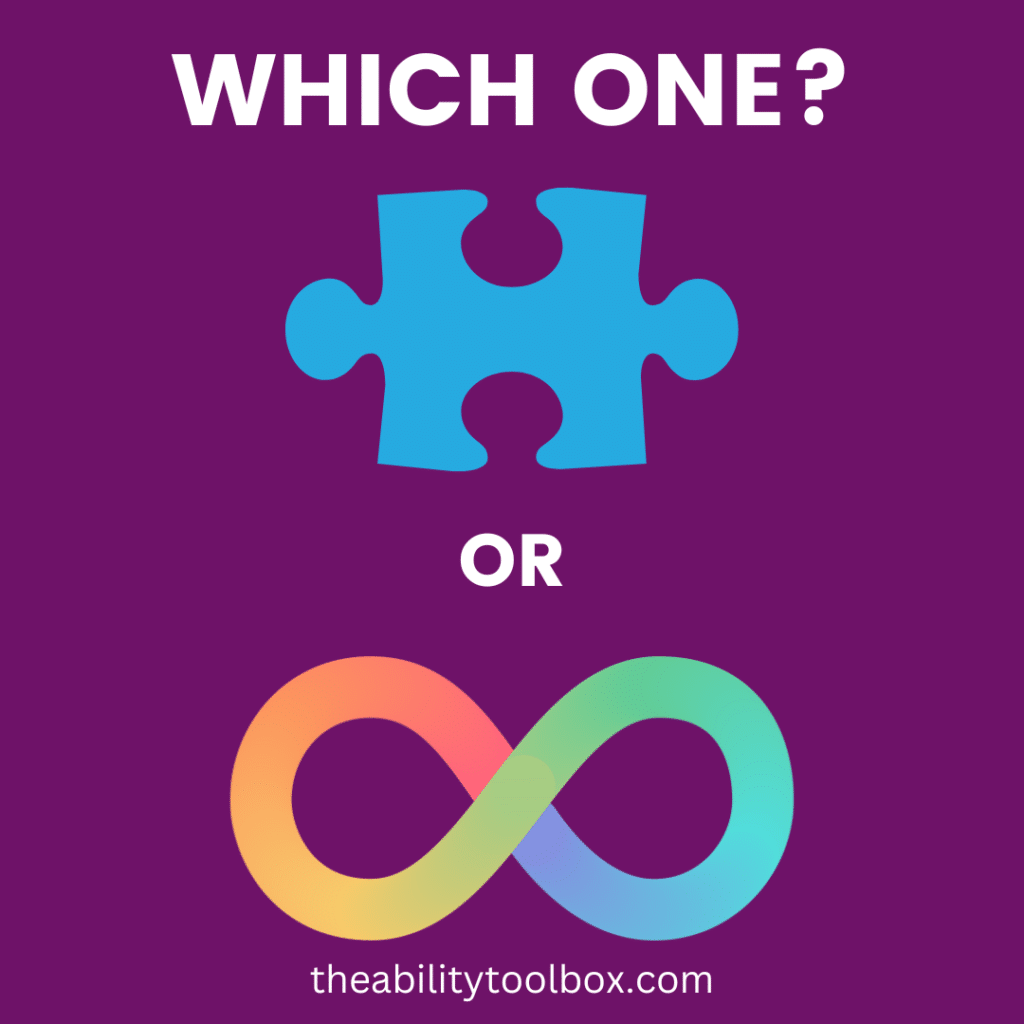
The Infinity Symbol: An Alternative to the Autism Puzzle Piece
The rainbow infinity symbol was created by autistic people in 2005 to represent all forms of neurodiversity. Although it's commonly used to represent autism, people with ADHD, sensory processing disorder, dyspraxia, and other unique ways of thinking can use it too. Since gold is Au on the periodic table of elements, the gold infinity symbol specifically represents autism.
Let me explain a bit more about the infinity symbol and why it’s a better representation of autism than the puzzle piece.
The infinity symbol helps to clarify the common but inaccurate depiction of the autism spectrum (and other types of neurodivergence) as a line. People imagine a gradient from so-called mildly to so-called severely autistic, but that’s not how it works. Autism is much more complicated than that. A person can have no challenges in one area, mild difficulties in another, and severe issues in yet another — and their needs can change from day to day or depending on the situation. Sure, there are people who generally need a lot more support than others, but you can’t assume that just because somebody can speak, their life is easy and autism barely affects them. That is simply not the case.
To use myself as an example, I have pretty good social skills. I was bullied in school but I also made friends who are weird like me (guess what, we were all neurodivergent). I’m smart and can be talkative in some situations. People don’t always guess that I’m autistic when they meet me. However, I have severe sensory issues. I can’t go to loud places without wearing my noise-canceling headphones. Some places are so overwhelming that I just don’t go, like amusement parks, unless it’s a very slow day and I can take breaks. I can work, but only from home where it's quiet and I can manage my sensory needs. So you could try to say my autism is mild, but that doesn’t really cover it.
The infinity symbol represents this better by showing that a person can be at any point on an infinite loop, and they can move to different places on that loop depending on the circumstances. For example, if I’m tired or sick, I struggle even more with sensory issues and I don’t want to be around people. I don’t have many meltdowns anymore except when I am stressed or sick, but when I have one, suddenly people “see” my autism (or think I’m having a mental breakdown).
My autism isn’t puzzling. It’s actually quite logical and predictable once people understand me. It’s the world that is confusing and unpredictable.
Items Featuring the Neurodiversity Infinity Symbol
You can show your support for autistic people during Autism Acceptance Month (and all year round) by wearing shirts, pins, etc. featuring the infinity symbol instead of the puzzle piece. This section contains affiliate links so you can support these neurodivergent-owned businesses and The Ability Toolbox!
Looking for more? Check out Autism Acceptance Clothing and Autism Pins, Stickers, and Accessories
No matter what your personal views may be on the issue, it's important to recognize that the autism puzzle piece is ultimately a source of distress for many members of the autistic community. As such, it's crucial that we take steps towards finding alternative representations that more accurately reflect our understanding of life on the spectrum — ones that promote acceptance and celebrate difference instead of reinforcing stereotypes and antiquated mindsets.
What do you think about the autism puzzle piece?
Share your thoughts with our safe and supportive neurodiversity community in the comments.
Learn More About Autism & Neurodiversity in The Ability Toolbox
- Fidget Toys for Skin Picking, Hair Pulling, and Dermatillomania
- 20 Fidget Blankets for Autism, ADHD, Alzheimer’s, and Sensory Needs
- Understanding Misophonia and Misokinesia: No, We Can’t Just Get Over It
- Autism Acceptance Pins, Stickers, & Accessories – Celebrate Neurodiversity
- Stylish Chewelry – Sensory Chew Jewelry for Adults with Autism & ADHD
Hey I'm Olivia and I'm a proud Autistic woman. My special interests are cats, stim toys, and electronic music! I love to write and help other Autistic adults find ways to enjoy life in this LOUD world!



